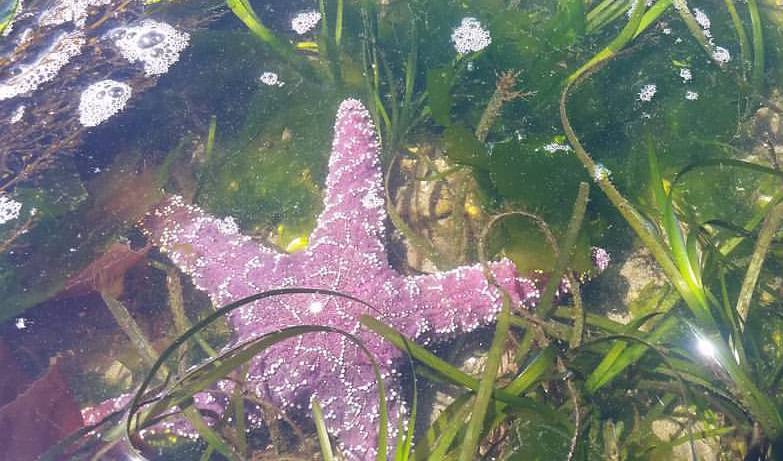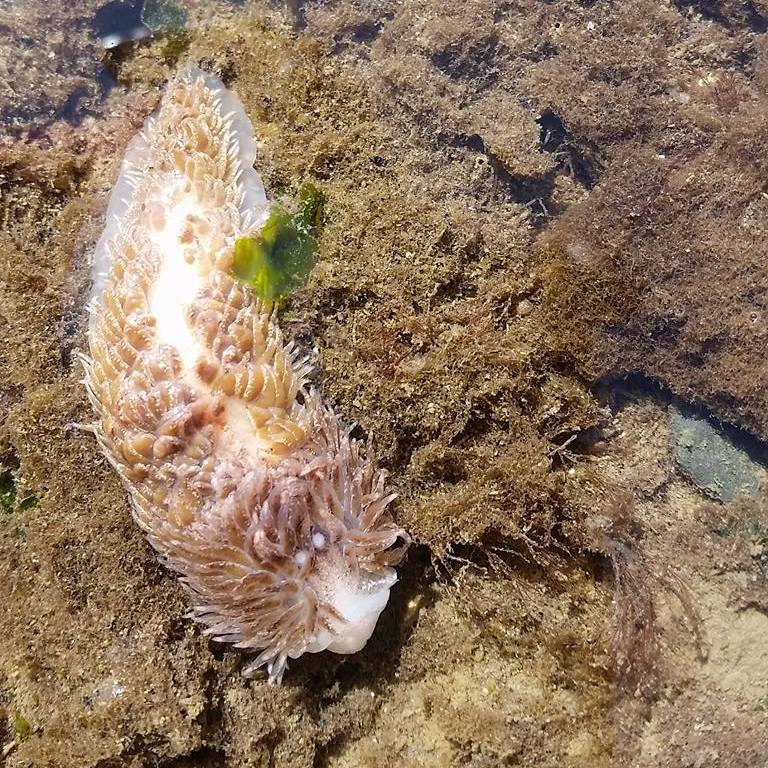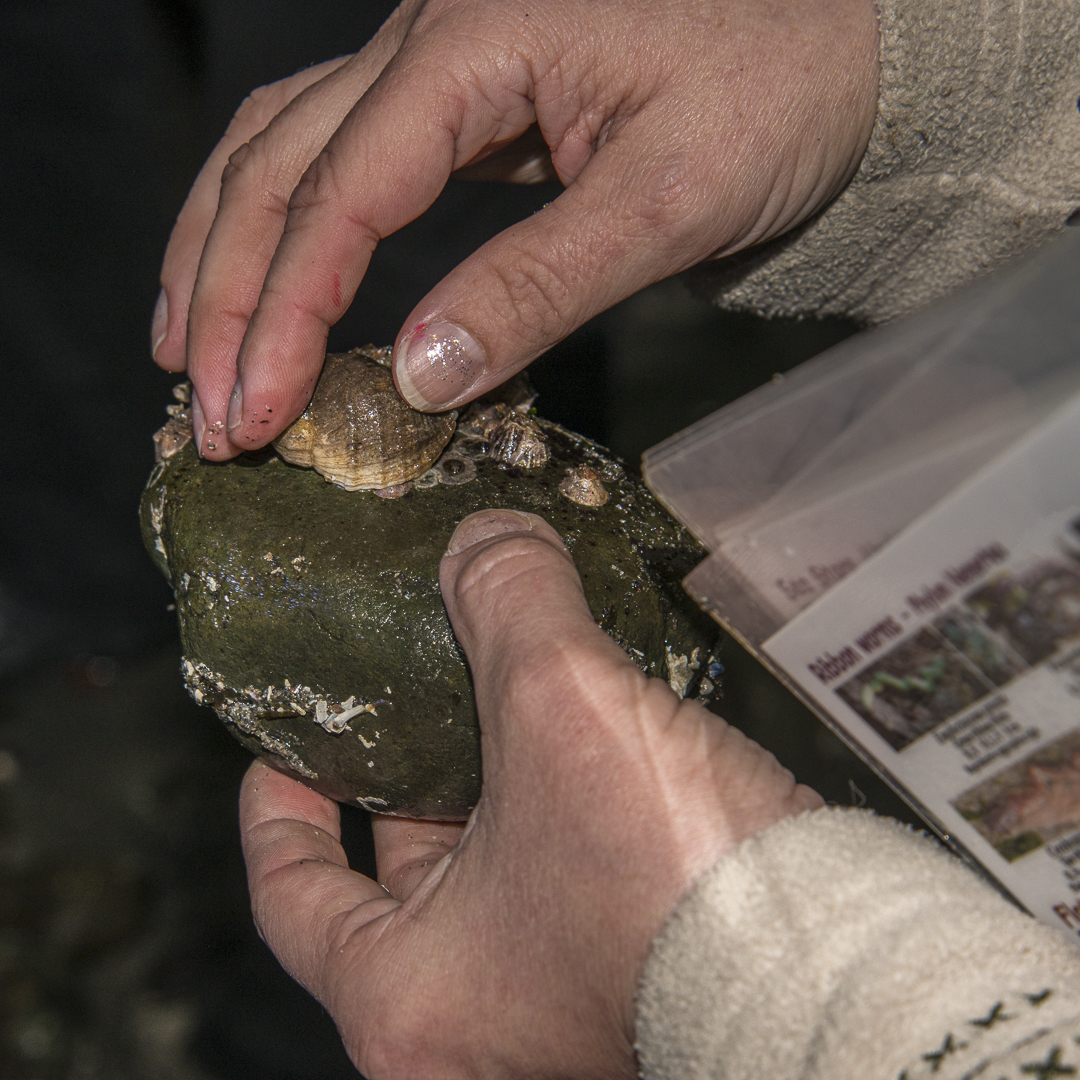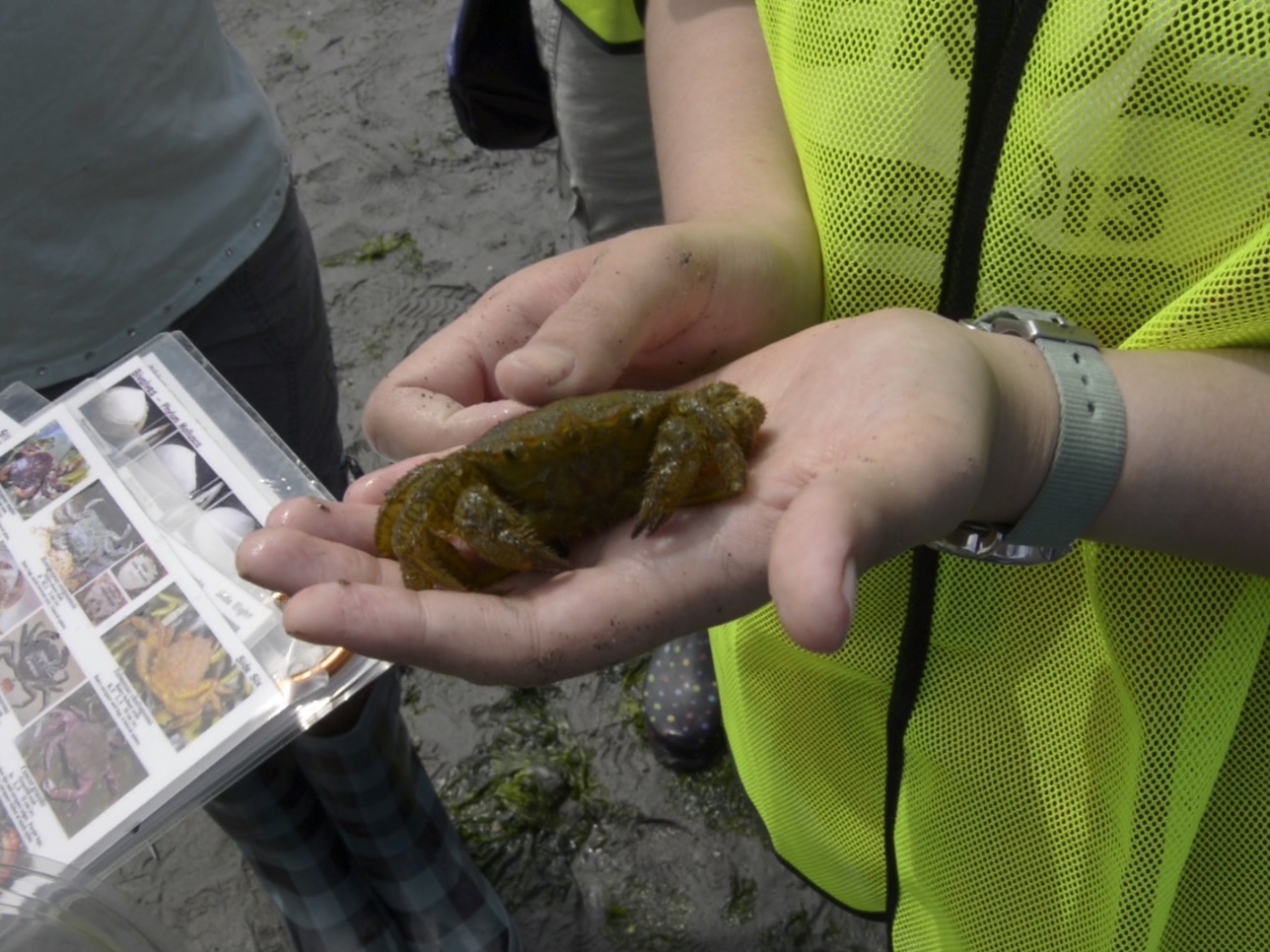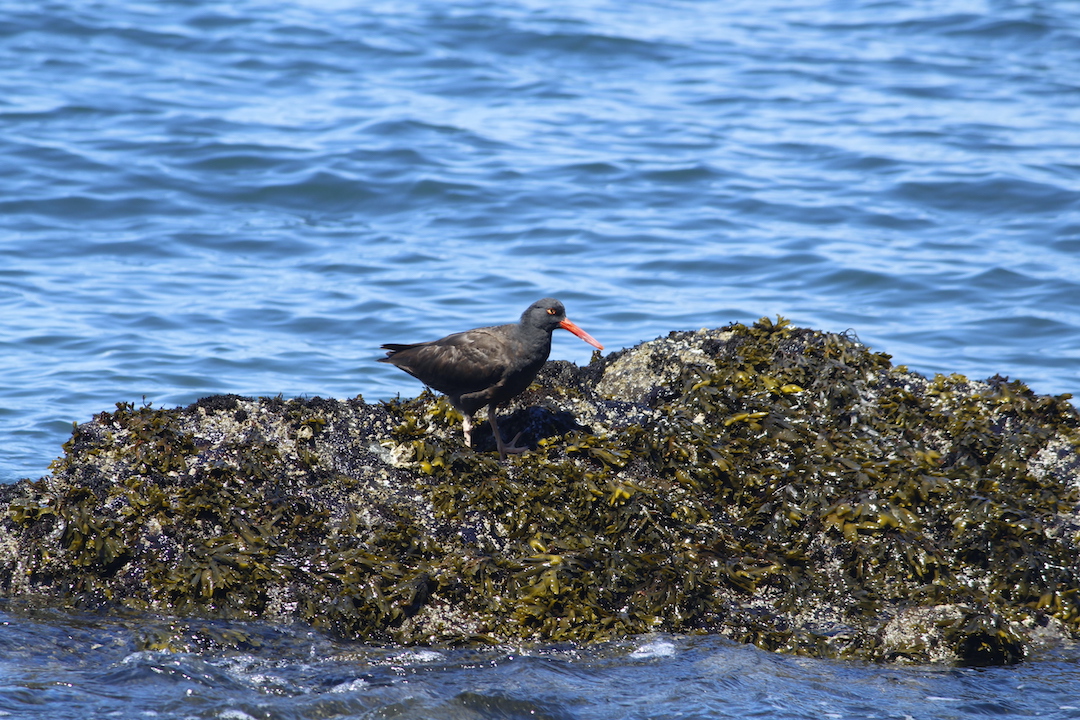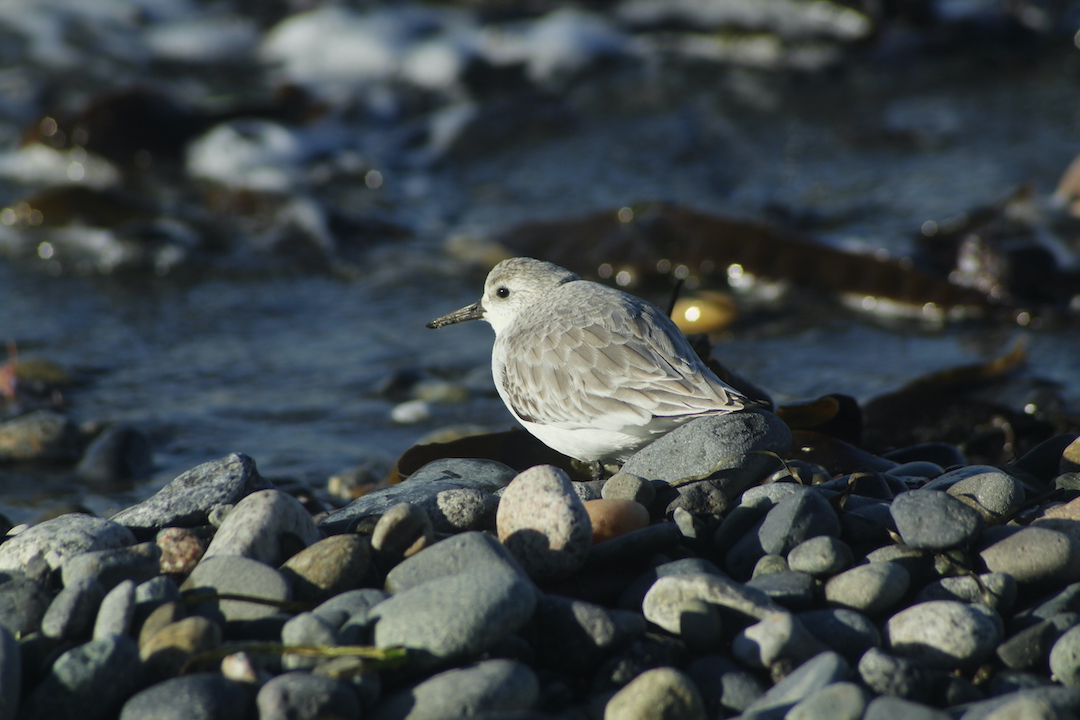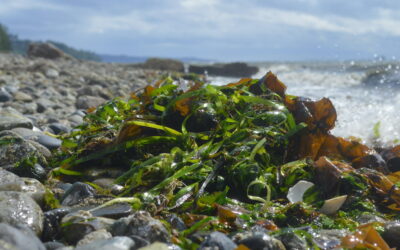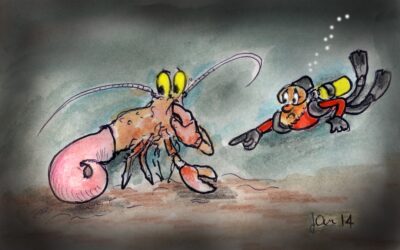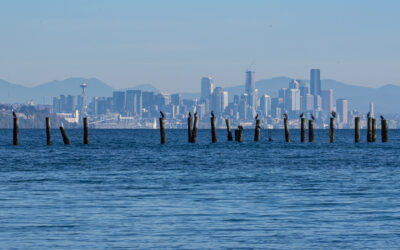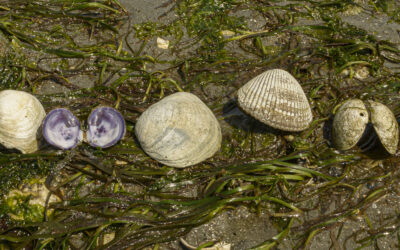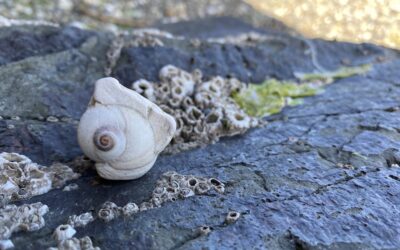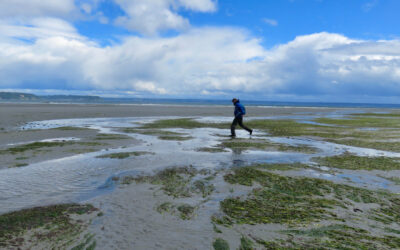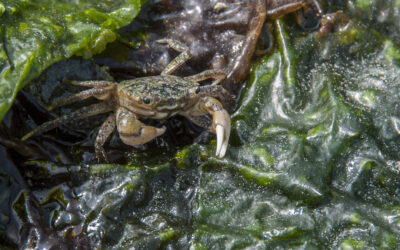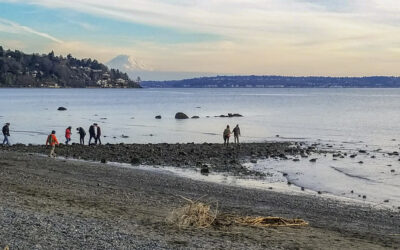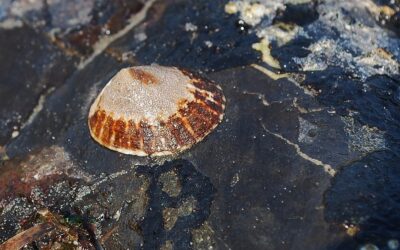HELLO UNDER THERE!
Proper Etiquette for Exploring the Beach
by Sarah Lorse, Summer 2021
photo by Kaylani Siplin
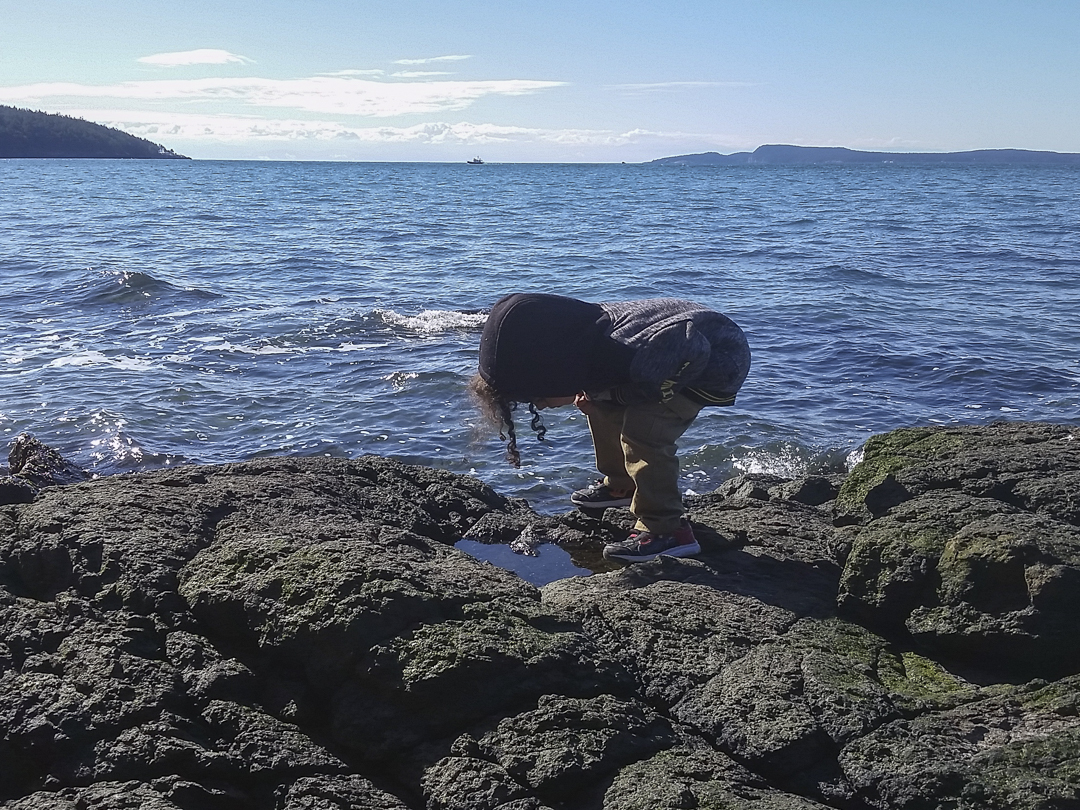
photo by Kaylani Siplin
HELLO UNDER THERE!
Proper Etiquette for Exploring the Beach
by Sarah Lorse, Summer 2021
At first glance, the beaches along the Salish Sea may seem desolate, except for the cacophony of gulls, but looking a little harder, you will discover that the beach is home to many creatures. Unless you are ready to don a snorkel and wetsuit, most of these beach dwellers are only visible to us during low tide.
photo by Kaylani Siplin
The animals we see when the tide goes out live in the intertidal zone. Organisms living here have special adaptations that allow them to survive both underwater and out in the air. Some animals have hard shells that seal closed, while others hide under rocks where it is cool and wet while the tide is out. The incoming tide brings relief to these animals, who can once again feed and move around under the water.
When we visit the beach, we are entering into a complex and delicate community. During low tide, creatures are most vulnerable. They are stressed by the natural conditions, and the added impact of humans can be detrimental.
Humans, even the smallest of us, are much larger than the organisms living in the intertidal zone. If a giant came traipsing down your street, lifting up houses to see what was inside, you would be afraid for your life. To the purple shore crabs that scatter when you approach, you are that giant. Being aware of our actions lets us learn and play at the beach while keeping the creatures that live there safe.
Whether you are visiting one of the Salish Sea’s more rare sandy beaches, skirting boulders and tidepools, or clambering over cobbles, you are a visitor to an expansive beach house community. Here are a few guidelines to help you respectfully meet the neighbors:
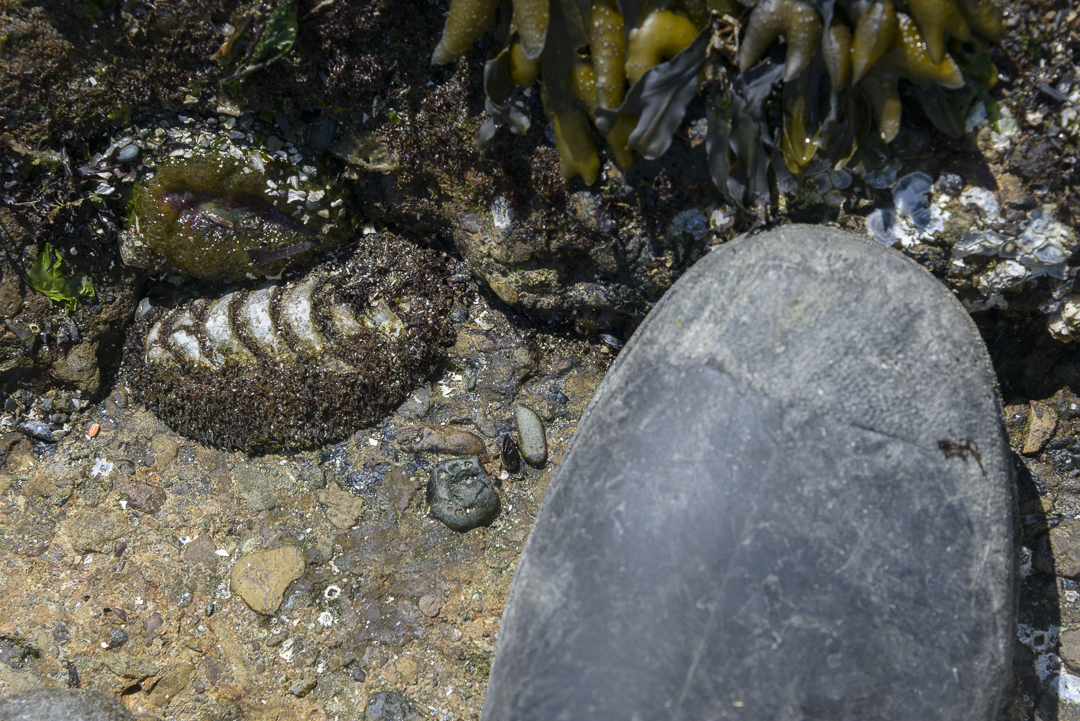
photo by John F. Williams
Tread Lightly — Every time you set your foot down, you are stepping on or near a living creature. Looking where you are walking will help you avoid stepping on a more sensitive beach dweller. If possible, step on bare sand or rocks. Even though barnacles have a hard exterior, they are easily crushed by our feet. If walking in the water, avoid eelgrass beds. The Salish Sea’s native eelgrass is a thriving nursery full of juvenile fish and crabs. Not only do you risk getting your toes pinched by a defensive red rock crab, but you can easily step on tender organisms.
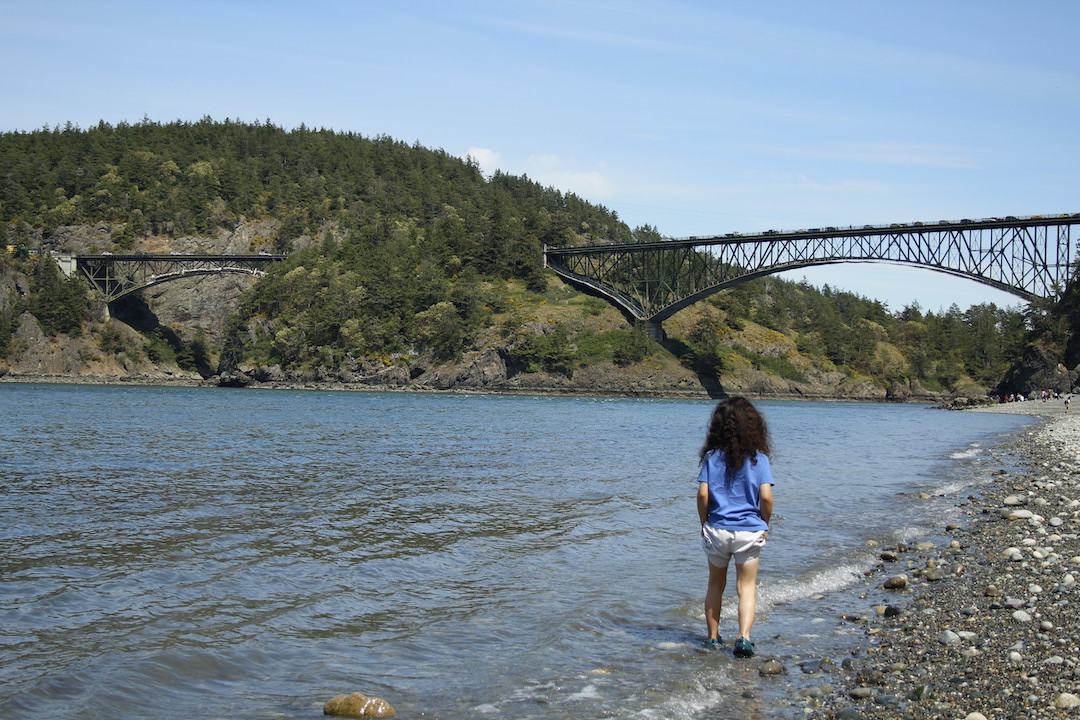
photo by Kaylani Siplin
Keep Calm — Whether you have discovered your first nudibranch or a crow is trying to steal your picnic, try to remain calm. The loud sounds and exaggerated motions we make from both excitement and fear can be harmful to the beach residents.
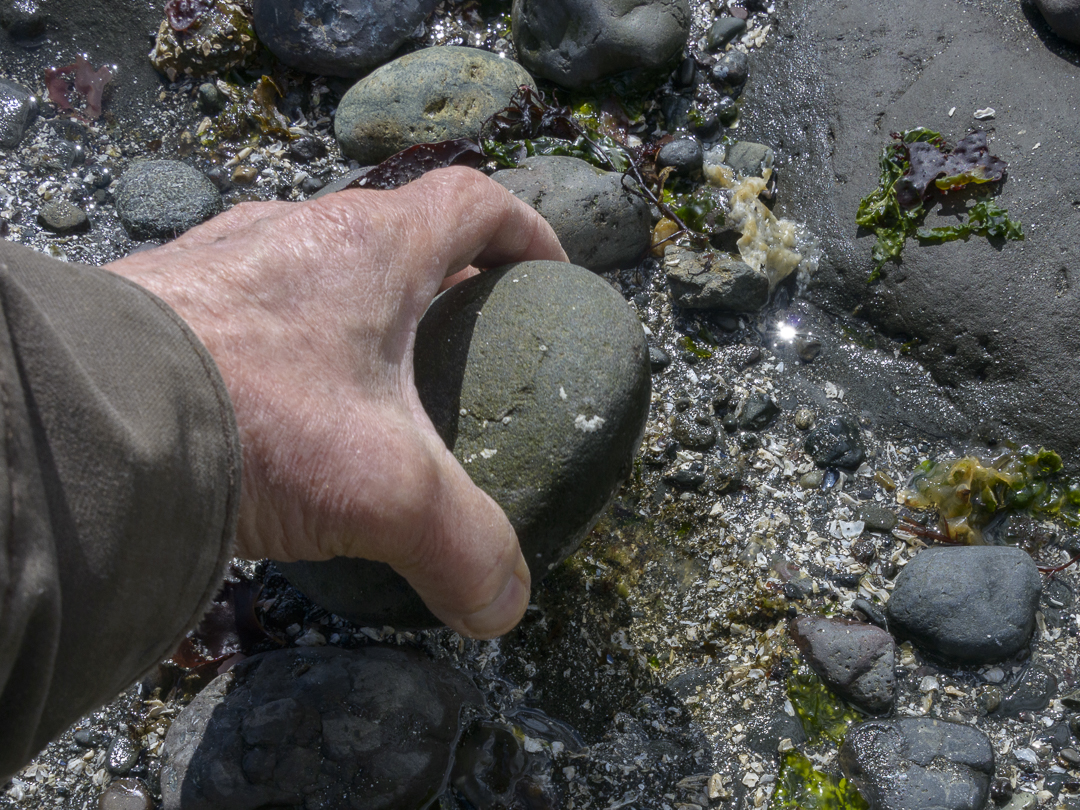
photo by John F. Williams
Put it Back Where You Found It — Although the rocks on the beach may just be rocks to us, these are condos, townhomes, and apartment complexes. The crabs, mollusks, and anemones have chosen their position on or under a rock carefully. While picking up a rock can let you uncover an amazing animal, be sure to put the rock back as it was before you came along. To protect yourself and the animals around you, consider picking up smaller rocks instead of rolling over large ones.
Keep Your Hands Wet — Animals in the intertidal zone have special ways of keeping their bodies wet even when the tide is out. Touching these animals with dry hands can be harmful to them. Dip your hands into the Salish Sea before touching beach animals to reduce your impact on them.
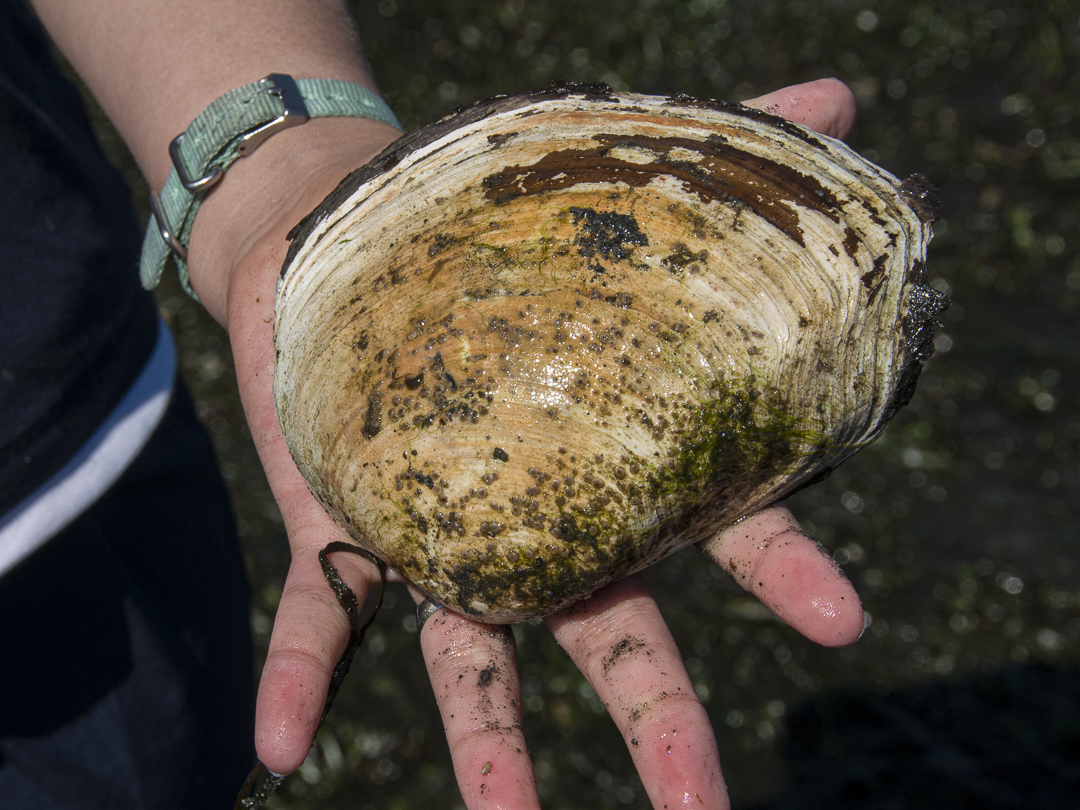
photo by John F. Williams
Use a Gentle Touch — Some intertidal organisms can be touched or held if done so gently. Some animals such as sponges, barnacles, and limpets are firmly attached to rocks; trying to remove these animals can be lethal for them. Creatures that are securely attached can be softly touched right where they are. You may be able to pick up other animals such as snails and sea stars if they are not holding on tight. When picking up an animal, be sure you have a gentle but secure hold on it. Instead of standing up all the way and waving your discovery around, remember these are living things; squat down and only raise the animal a few inches above the ground. If a crab scuttles off your hand, the fall’s impact will be less harmful if it is only a few inches from the ground. When you are done examining the animal, put it back just as you found it. Animals living on the beach don’t necessarily want to be picked up and may be defensive.
Only Take Pictures (and Trash!) — With many beautiful rocks and shells on the Salish Sea beaches, it can be very tempting to pop a couple in your pocket as a souvenir. Please resist the temptation. That empty heart cockle may be the refuge a crustacean needs to escape the beak of a passing black oystercatcher, and those discarded snail shells are the future home for a growing hermit crab. Even the smallest and most sparkly of rocks is a safe haven. Besides taking pictures, you are always welcome to take as much trash home (or to the nearest garbage can) as you like. Consider bringing a trash bag with you anytime you head to the beach. We like our neighborhoods to be litter-free, and so do those living on the beach.
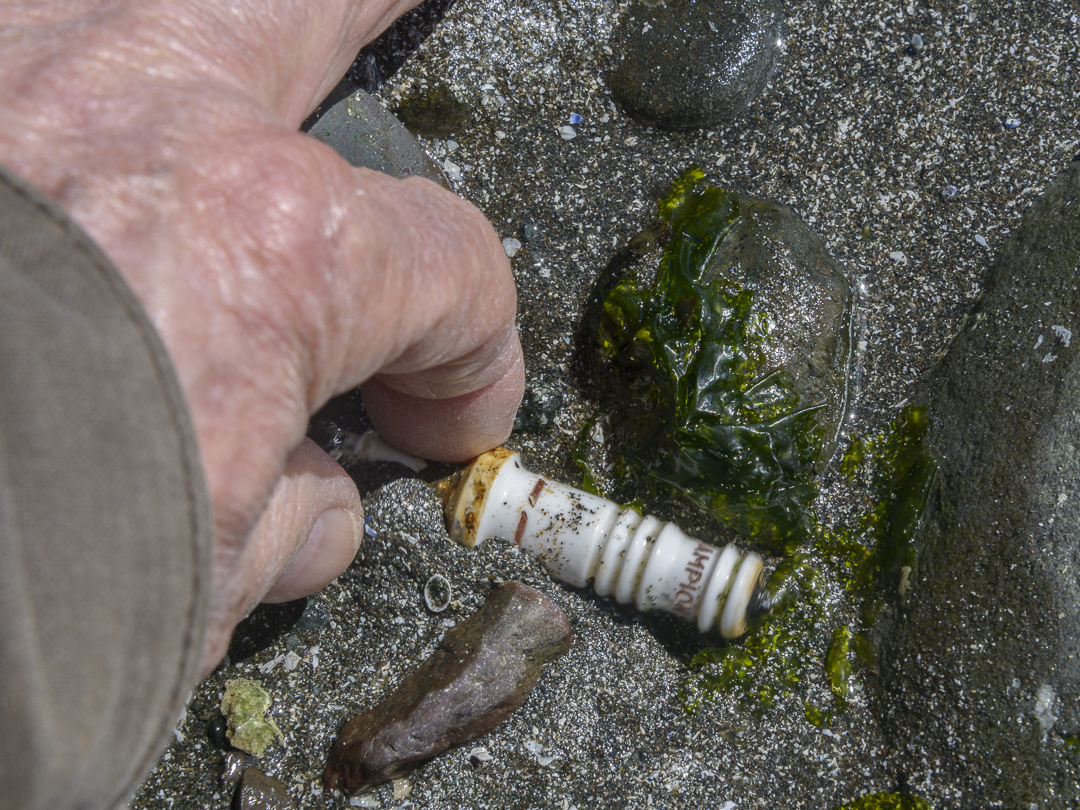
photo by John F. Williams
If you happen to visit a beach during the spring or summer, you might see some folks in colored vests. These are volunteers with Seattle Aquarium’s Beach Naturalist program, Snohomish County’s Beach Watchers, Salish Sea Stewards, or another naturalist group. They can help you with animal ID and may also give you a few etiquette reminders if they are concerned for a beach dweller’s safety.
All around the Salish Sea, beaches are home to birds, mammals, invertebrates, and more. The beach is their home, not ours. It is our responsibility to be respectful of those beach residents. With a delicate hand and an open mind, you can discover some incredible living creatures.

Sarah Lorse is a Seattle-born naturalist, writer, and photographer. She has worked many jobs in the environmental field and is currently working as an organic landscaper. She loves to connect others to nature through her work, whether it is teaching about the benefits of native plants or encouraging responsible recreation practices.
When she is not working, she can be found playing outside. She loves climbing (rocks, mountains, and trees), gardening, and just observing the natural world.
You can find more of her work on her website www.naturewritten.com or by following her on social media @flora_nativa_.
Table of Contents, Issue #12, Summer 2021
Beach Wrack
by Nick Baca, Summer 2021 photos by Nick Baca except as notedby Nick Baca, Summer 2021 photos by Nick Baca except as notedOn a warm sunny day, the shores of Puget Sound are filled with the smell of rotting seaweed. Flies are heard before they are seen, swarming above...
Hermit Crabs
by Sadie Bailey, Summer 2021 photos and drawings by Jan Kocian fact checked by Greg Jensenby Sadie Bailey, Summer 2021 photos and drawings by Jan Kocian fact checked by Greg Jensen The waves fly onto the beach as if they were racing each other. Which one can...
Piling Up
by Jeff Adams, Summer 2021 photos by Jeff Adams except as noted fact checked by Andy Lambphoto by John F. Williamsphoto by John F. Williamsby Jeff Adams, Summer 2021 photos by Jeff Adams except as noted fact checked by Andy LambAs a marine ecologist and nature...
RVs of the Beach
by Tom Noland, Summer 2021 photos by Tom Noland except as noted fact-checked by Greg Jensenby Tom Noland, Summer 2021 photos by Tom Noland except as noted fact-checked by Greg JensenWalking the shore of Cama Beach State Park on one of the lowest tides in recent...
Shell Shapes
by Chris Rurik, Summer 2021photo by Sarah Cavanaughphoto by Sarah Cavanaughby Chris Rurik, Summer 2021 Photos by Sarah CavanaughI have a collection of broken shells. They litter my desk and drawers, wave-smoothed fragments of curves and spirals, half-bleached, like...
Moon Snails at Low Tide
by Marilyn DeRoy, Summer 2021 Photos & video by Marilyn DeRoyBy Marilyn DeRoy, Summer 2021 Photos & video by Marilyn DeRoyAt the end of May, we had two days of minus 3.8’ (minus 1.15 m) tides at the northern end of the Kitsap Peninsula; wonderful for...
A Rainbow of Crabs
by Laura Marx, Summer 2021 fact-checked by Greg Jensen photo by John F. Williamsphoto by John F. Williamsby Laura Marx, Summer 2021 fact-checked by Greg Jensen On a Saturday in early March, in an attempt to shake off the last of the winter lockdown slump, my partner...
Poetry-12
Summer 2021Photo by Jessica C. LevinePhoto by Jessica C. LevineSummer 2021To begin this section of poetry, here are three haikus which speak to our excessive heat this summer.by Drea Dangerton Cold water absentDrive belt for water massesFrayed, hardly churning...
Home Sweet Home
by Barbara Erickson, Summer 2021 Photos by Barbara Erickson except as noted by Barbara Erickson, Summer 2021 Photos by Barbara Erickson except as notedWHOOPEE! With the approach of summer and loosening of COVID restrictions, it’s time to head out exploring! For me,...
PLEASE HELP SUPPORT
SALISH MAGAZINE
DONATE
Salish Magazine contains no advertising and is free. Your donation is one big way you can help us inspire people with stories about things that they can see outdoors in our Salish Sea region.
We also don't advertise Salish Magazine, so please spread the word of this online resource to your friends and colleagues.
Thanks so much for your interest and your support.
We also don't advertise Salish Magazine, so please spread the word of this online resource to your friends and colleagues.
Thanks so much for your interest and your support.

